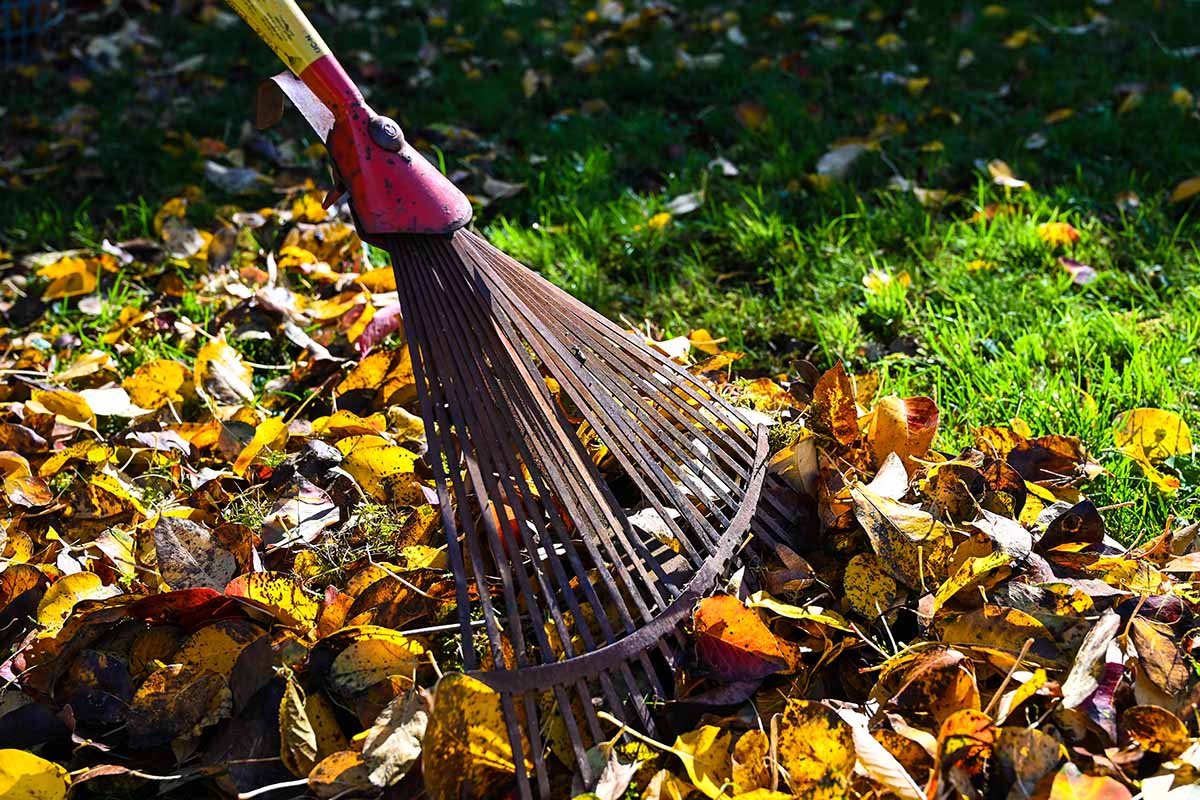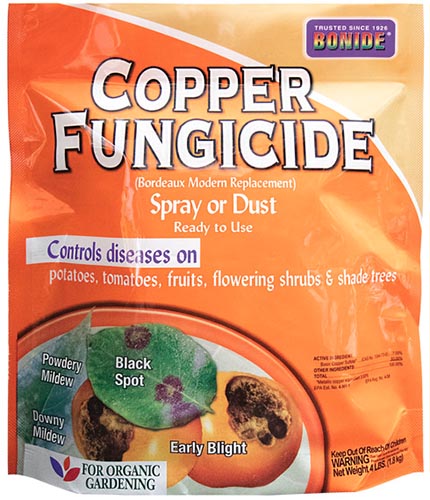[ad_1]
Venturia spp.
I really like the early spring, when the riot of flowers are coloring the panorama and the common rain makes every little thing inexperienced and plush.
Sadly, pear scab, attributable to Venturia pirina (syn. V. pyrina) loves the springtime, too.
That’s when the fungus begins to unfold, and earlier than you recognize it, your pear bushes are in hassle.

We hyperlink to distributors that can assist you discover related merchandise. When you purchase from one in every of our hyperlinks, we might earn a fee.
Scab is a illness that impacts European pears worldwide, and it’s a critical, devastating drawback for industrial and residential growers alike.
The illness can even infect Asian pears however the causal pathogen, V. nashicola, hasn’t been recognized exterior of Asia, so growers in Europe or the Americas don’t have to panic in regards to the illness on Asian varieties.
When you discover spots on the undersides of the leaves, or possibly even lesions on the fruit, there’s no time to waste.
We’ll clarify every little thing it’s good to learn about this widespread illness. Right here’s what’s developing:
What Is Pear Scab?
Pear scab is a fungal illness attributable to species within the Venturia genus that stay and breed solely on pears.
European pears turn into contaminated by V. pirina and Asian varieties by V. nashicola.
There are a number of races of every species, with various signs, infectiousness, and diploma of fungicide resistance.

V. nashicola doesn’t influence European pears, nevertheless it does assault all Asian sorts, together with Japanese (P. pyrifolia var. culta) and Chinese language (P. bretschneideri and P. ussuriensis) pears.
Presently, it’s solely present in Asia, and growers within the Americas and Europe are taking precautions towards it spreading to Asian pears rising in these areas.
P. pirina seems in all elements of the globe besides Japan and japanese China.
Each are carefully associated to V. inaequalis, the pathogen that causes apple scab, which produces related signs in apple bushes.
Signs
Figuring out this illness early will make all of the distinction in how severely it is going to influence your tree and the quantity of injury it is going to do to the fruit, which is what all of us actually care about, proper?

A short time after the fungus infects your tree, you’ll begin to see small olive or yellow, chlorotic spots on the undersides of the leaves.
Except you study your vegetation carefully regularly, it’s possible you’ll miss this preliminary proof.
It’s not till patches seem on the higher sides of the leaves and on fruits that we gardeners typically discover the issue. These lesions shall be brown or black and smooth.
In contrast to apple scab which solely assaults the leaves and fruit, this illness can even trigger lesions on the shoots.
As soon as the fruits develop, they’ll have olive-colored round areas with a velvety texture on the floor of the pores and skin.
These will finally turn into darkish with a cork-like texture and may crack. The fruits may additionally be deformed or drop from the tree.
The severity of the signs rely completely on what number of fungal spores have contaminated the plant.
Biology and Life Cycle
Pseudothecia, that are pillow-like constructions that defend the fungal spores, overwinter on fallen leaves or fruits. They’ll additionally survive on twigs and branches on the bushes.
Because the climate warms up in spring, spores often known as ascospores are launched from the pseudothecia and unfold through wind and water. These spores are the principle technique by which the fungus spreads from tree to tree.

The ascospores turn into lively and unfold proper about the identical time that the buds are rising and beginning to open on pear bushes.
It doesn’t matter if the rain (or irrigation) is going on through the day or night time. These spores have tailored in order that they’ll unfold any time, not like many different species of fungi, which might solely unfold through the day or night time.
As soon as the spores land on a bunch, they want water for at the least 9 hours and the temperatures should be between 59 to 77°F for the spores to germinate and infect the plant.
After an infection, conidia seem on the branches and leaves of the tree which might additionally unfold through wind and water all through the remainder of the rising season, although these are much less infectious than the ascospores produced in spring.
Within the fall when the temperatures drop, the fungus breeds on leaf litter, producing the pseudothecia the place the spores will stay till the following spring.
Natural Management Strategies
Natural management is the easiest way to take care of pear scab, whether or not you adhere to natural rising rules or not.
Utilizing a number of of those methods will assist to manage the illness with out upsetting the stability of the backyard atmosphere with using chemical substances.
Whether or not you select natural or chemical management, it’s completely important that you just rotate your fungicides. Scab fungus will develop resistance in case you use the identical fungicide again and again.
Plant Resistant Varieties
Asian pear varieties are proof against V. pirana, and all European pears are proof against V. nashicola.
Whereas breeders are working laborious to create scab-resistant European pear cultivars, there aren’t many obtainable but. ‘Barnett Perry,’ ‘Batjarka,’ ‘Brandy,’ and ‘Erabasma’ are resistant however somewhat laborious to seek out.
Some resistant Asian cultivars embrace ‘Hiangli,’ ‘Kinchaku,’ ‘Nashi,’ and ‘Ya Li.’
Word that resistant doesn’t imply immune. The bushes may nonetheless show signs, however these signs are typically vastly decreased with little harm to fruits.
Bodily
At all times, at all times, at all times clear up any fallen leaves or fruits within the autumn to disclaim the fungus locations to overwinter.

You also needs to mow the realm across the bushes to cut up any missed leaf litter.
This alone gained’t management the illness, however it is going to dramatically scale back the quantity of inoculum current. Keep in mind, the much less inoculum round, the less signs your tree will expertise.
Organic
It’s attainable to forestall scab through the use of the helpful micro organism, Bacillus subtilis pressure QST 713.
This technique gained’t work if the pathogen is already current, so in case you’re already seeing signs of scab, use fungicides to eradicate the illness after which use this the next spring to forestall it from returning.
This micro organism works by forming a protecting barrier wherever you spray it. It even grows together with the tree, to a sure diploma.

Serenade ASO
Serenade ASO is a product that accommodates this micro organism, and it’s obtainable from Arbico Organics.
Apply it rigorously following the producer’s instructions. It ought to be utilized as a foliar spray within the early spring earlier than buds and shoots begin forming or within the fall.
You can too use a product that accommodates Bacillus amyloliquefaciens pressure D747 as a preventative or to suppress the illness. This could be a useful choice as you rotate your fungicides.
For instance, you possibly can use one fungicide, then flip to B. amyloliquefaciens, after which apply a special fungicide.

Bonide Revitalize
Choose up Bonide Revitalize in 32-ounce ready-to-use or 16-ounce focus at Arbico Organics.
Natural Fungicides
Fungicides work nicely towards pear scab, however you should rotate them, as we talked about. When you stick with only one product, the fungi will turn into immune and the fungicide shall be ineffective.

In the case of natural choices, copper, Bordeaux, sulfur, mineral oil, neem oil, and lime sulfur are all efficient and available.
When you select to make use of copper or Bordeaux, don’t apply these merchandise after blooming, because it might trigger fruit russeting.
As an alternative, use these beginning when inexperienced shoots first seem and the buds open. Cease when the blooms fade and fall from the tree. At that time, change to a different product.
I at all times advocate that gardeners hold copper fungicide of their backyard toolkits as a result of it may possibly deal with so many fungal points.

Bonide Copper Fungicide
When you don’t have already got some, pop over to Arbico Organics to nab a pound or four-pound container of powder to combine with water and spray in your bushes.
When rotating your product, observe the producer’s instructions for timing.
For instance, if the producer recommends you apply copper each three weeks and sulfur each 4 weeks, apply the copper, wait three weeks, then apply the sulfur, wait 4 weeks, and return to the copper.
Chemical Management
In my expertise, chemical fungicides don’t work any higher than the natural choices, however that doesn’t imply they don’t have their place within the backyard.

Keep in mind, the fungus will turn into proof against no matter fungicide you employ if the identical product is utilized repeatedly.
So it’s essential to rotate your merchandise. You may even rotate between natural and chemical controls.
Propiconazole is a wonderful choice in case you stay in a area with quite a lot of wet climate.
Many natural choices wash off within the rain, however propiconazole will stick round even after repeated rainfall.

Gunner Propiconazole Fungicide
Amazon carries gallon containers of Gunner 14.3 MEC Propiconazole Fungicide.
You can too use a product that accommodates myclobutanil or tebuconazole.
Use any of those merchandise on a peaceful day so the product doesn’t float over unintended vegetation within the breeze.
Don’t Choose This Scab
Nobody desires to lose their treasured harvest to a nasty pathogen, however so far as plant ailments go, pear scab isn’t the worst, particularly in case you catch it early.
You may deal with it and get going in your pear recipes. Simply bear in mind to rotate whichever management technique you select.

Are you coping with pear scab? What sort of signs are you seeing? Tell us what’s happening within the feedback part under.
And for extra details about rising pears in your backyard, have a learn of those guides subsequent:
[ad_2]



